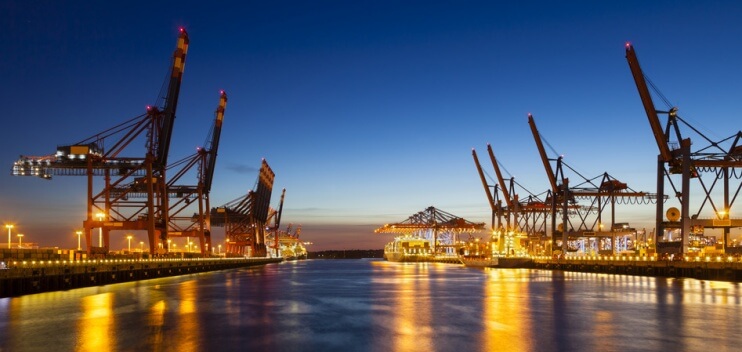Volatility in ocean freight rates.
Volatility in freight rates is not new. The fall in container shipping rates continues a two year decline. As the current rates (especially Asia to Europe) are likely to be loss-making for shipping companies, something will give. Demand-supply in the market will regain balance and all will be right – but will it?
Most major routes in 2015 had falls of between 10 and more than 20 percent, with the highest of more than 40 percent on the Asia to Europe route. While a Logistician will be pleased with a short term reduction in transport costs, there is the longer term view to consider. This is your Supply Network plan. Here you polish the crystal ball and consider what might happen throughout the Supply Network over the next eight years, or longer. This scenario is input to the revised network plan and the timetable and cost for implementation.
A start for the scenario is the volume of containers in and out of China that influence world trade. The decline of shipping rates from China to much of the world has two drivers:
- Decline in demand for goods manufactured in China
- Low wage increases in developed countries means citizens are using savings (or savings foregone) to supplement income. There is less desire for ‘things’
- Unemployment rates in Europe affect demand
- The volume of component exports from Asia to China is dependent on the level of Chinese exports
- It is generally assumed that more than one third of world trade is intra-company (between subsidiaries); a 2009 OECD report indicated that the share of intra-firm exports of total exports from affiliates under foreign control is around 50 percent
- Oversupply of ships to transport expected increase in demand
- Orders on shipbuilders were based on expectations of a continual increase in global demand; this failed to materialise
- The global container shipping fleet is expected to grow in 2016 at twice the rate of underlying demand, with minimal increase in demand (Drewry Shipping Consultants)
- Utilisation of ships on the major shipping routes continues to decline
- Continuing decline in revenues and profits for most major shipping companies
- Mid-size and smaller shipping companies are unable to compete with low freight rates. They exit the market or are acquired by larger companies, which remove excess capacity. Recent examples are:
- Merger of COSCO with China Shipping in early 2016 to form the world’s fourth largest container line
- CMA CGM purchased the Singapore based Neptune Orient Lines in late 2015
Towards an oligopoly in shipping
Global demand is unlikely to substantially grow, but the large (and some mid-size) shipping companies have not cancelled orders for new and larger ships. Therefore, over capacity will continue and ocean freight rates can be expected to remain low for several years.
What could be the outcome?
- Large shipping companies have borrowed at low interest rates to expand their capacity. Larger size enables resource to apply systems and technologies to reduce unit costs, so the companies can be profitable at low freight rates
- In 2015, the largest 20 shipping companies controlled 87 percent of the world’s container capacity, up from 79 percent in 2005. The largest 10 companies increased their share from 58% in 2009 to 65% in 2015
- Market share of the top five companies (Maersk, Mediterranean Shipping, CMA CGM, Hapag-Lloyd and Evergreen) has increased from 37 percent in 2005 to 47 percent in 2015. The top three container carriers have increased their market share in the same period from 26 percent to 38 percent
- The current top five businesses are either private or family owned, where decisions are made with a longer term focus. Although Maersk is a public company, the majority of its shares are held by the founding family. When the Chinese companies merge there will be one government owned company in the top five
If freight rates continue to remain low, an outcome is likely to be a continuing consolidation of shipping companies through acquisition or companies exiting the business, with a potential increase of monopolies and cartels. If the top five container carriers continue to increase their market share, the market could evolve into an oligopoly.
So, here is an external risk in your Supply Network plan. Factors to consider in establishing the likelihood and consequences of the risk are:
- Forecasts are most likely wrong: For example, in early 2008, there was concern about the possible shortage of container terminal capacity. However, the financial crisis reduced the pressure for an increase in capacity (Drewry Shipping Consultants)
- Actual capacity added on a shipping route is about one-third of that originally proposed and it arrives four years later than planned (Drewry Shipping Consultants)
- By 2025 there is estimated to be an additional 1.8b people in the consuming class, mainly from emerging countries. New shipping routes, terminals and hubs will be required and governments are likely to influence how shipping companies operate
The scenario discussed here is similar to what is happening in the iron ore market, where a few major companies with low operating costs are profitable in a low price environment. Smaller miners cannot compete and are exiting the industry. This could eventually change the market such that major suppliers dictate the market, rather than being price takers, based on spot and futures market prices.

